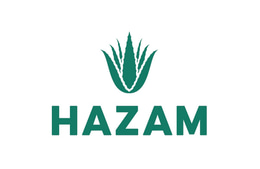Ready to Grow Your Brand? Contact Us for a Free Quote Today!
How to Help Customers Save 30% on Skincare Procurement Costs?
In the competitive skincare industry, procurement costs play a crucial role in maintaining profitability and competitive advantage. Businesses, especially small and medium-sized skincare brands, are always looking for ways to reduce costs without compromising product quality. Here are some strategies that can help your customers save up to 30% on their skincare procurement:
12/11/20243 min read


1. Leverage Bulk Purchasing and Economies of Scale
One of the most effective ways to lower unit costs is through bulk purchasing. By buying ingredients, packaging, or finished products in larger quantities, companies can take advantage of economies of scale. Bulk purchases often come with discounts and lower per-unit prices, helping businesses save significantly.
How to implement:
Negotiate with suppliers for better prices when ordering large quantities.
Plan ahead to manage inventory efficiently and avoid overstocking.
2. Build Strong Supplier Relationships
Long-term relationships with suppliers can lead to cost-saving opportunities. Suppliers may offer discounts, faster delivery times, or flexible payment terms for loyal customers, thus reducing procurement costs.
How to implement:
Regularly communicate with suppliers and negotiate favorable terms.
Look for suppliers offering volume discounts or loyalty programs.
3. Source from Cost-Efficient Manufacturing Locations
Manufacturing and sourcing ingredients from countries or regions with lower labor and production costs can result in substantial savings. Exploring manufacturers in emerging markets or cost-effective regions can help reduce overall production expenses.
How to implement:
Research and find suppliers in regions where labor and production costs are lower, but quality is still maintained.
Consider working with factories that specialize in cost-efficient production processes.
4. Streamline Inventory and Supply Chain Management
By optimizing inventory levels and improving the supply chain, businesses can reduce storage costs and avoid the financial burden of holding excess inventory. Efficient supply chain management ensures that orders are placed only when necessary, keeping procurement costs under control.
How to implement:
Use software or tools for better demand forecasting and inventory management.
Regularly review your inventory to avoid over-ordering or under-ordering.
5. Automate Procurement Processes
Automation tools can help streamline procurement processes, reducing the time and cost associated with manual order management. This allows businesses to place orders more efficiently, minimize human error, and ensure that they are always getting the best price.
How to implement:
Implement procurement management software to automate purchase orders and track pricing.
Set up automatic reorder triggers to avoid missing discounts on bulk purchases.
6. Negotiate Better Payment Terms
Extending payment terms with suppliers or negotiating early payment discounts can help reduce costs. For example, paying early may earn a discount, which can significantly reduce the total procurement cost over time.
How to implement:
Negotiate longer payment terms to better manage cash flow.
Seek early payment discounts from suppliers to lower overall costs.
7. Consider White Labeling or Private Label Products
Instead of creating new products from scratch, businesses can save costs by purchasing white-label or private-label skincare products. These products are already manufactured and ready for branding, reducing development and production costs.
How to implement:
Work with established manufacturers who offer white-label or private-label options.
Focus on branding and marketing to create your own unique brand identity without the cost of production.
8. Focus on Product Packaging Optimization
Packaging is a significant part of the procurement cost in skincare products. By optimizing packaging designs or using alternative materials, businesses can cut costs without affecting the perceived value of the product.
How to implement:
Research eco-friendly packaging options that are cost-effective.
Consider minimalist packaging designs that reduce material costs.
9. Partner with Third-Party Logistics Providers (3PL)
Third-party logistics providers can help streamline shipping and warehousing processes, potentially reducing logistics costs. By outsourcing logistics, businesses can save on warehousing fees and transportation costs, which are significant components of procurement.
How to implement:
Partner with a reliable 3PL provider that offers competitive rates for warehousing and shipping.
Consolidate shipments to reduce freight costs.
Conclusion
By strategically focusing on bulk purchasing, optimizing inventory, building strong supplier relationships, and leveraging automation tools, businesses can cut procurement costs by up to 30%. These cost-saving measures will not only increase profitability but also improve operational efficiency and competitive positioning in the skincare market.
Helping your customers achieve these savings can position your brand as a reliable, cost-effective supplier in the competitive skincare industry, driving long-term partnerships and success.
